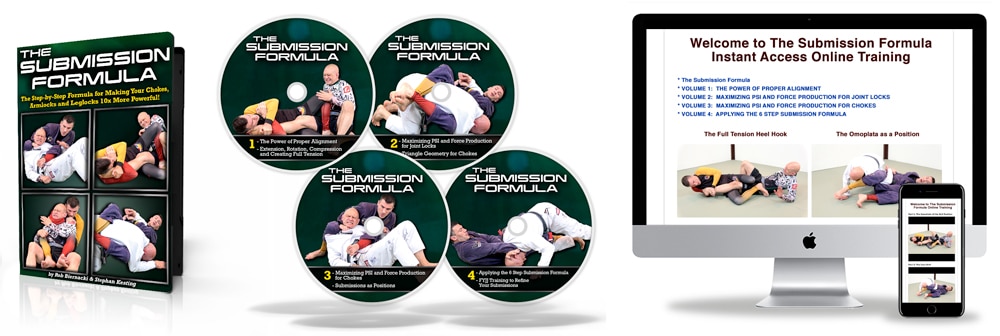The armbar from mount is often taught as the ‘CPR’ armbar where you’re mounted on your opponent, he sticks his arms straight up, you put both your hands on his chest and swing around into the armbar.
It’s slick, it’s smooth, and it looks great.
But the only reason the CPR armbar works is because your opponent has broken his own structure by pushing on your chest. Good opponents will almost never do that.
To armbar someone good you first need to methodically break apart their defenses and then keep them in a bad position while you move into a submission.
And to armbar someone high level in competition (where people are often willing to eat a bit of damage in order to escape a submission) you have to be able to potentially generate a LOT of power, essentially threatening the possibility of a catastrophic injury before they’ll tap out.
This video by Rob Biernacki from The Submission Formula shows you how to attack with the armbar from mount in a way that works on a good, tough, and strong opponent! Check it out…
This video shows you how conceptual jiu-jitsu can be applied to turn a regular armbar into a super-tight armbar from which escape is almost impossible.
This is a very systematic procedure…
First Rob disrupts my POSTURE by bending my spine, then he uses WEDGES to separate my my arms from my body and accesses a LEVER to control the arm (and break grips if required).
Before Rob tries to finish the armlock he takes steps to destroy my BASE (making it difficult for me to generate power in a relevant direction), POSTURE (by bending my head and weakening my spinal alignment) and STRUCTURE (by systematically putting my arms into a bad position).
(Wedges, levers, base, posture and structure are all explained in great detail at the bottom of this post.)
To finish the armbar he uses EXTENSION to pull the upper arm away from the body, COMPRESSION by pushing down on the shoulder, and ROTATION by turning the thumb down towards the feet.
Finally he puts himself into the correct alignment so he can BRIDGE powerfully while using a bony bit of his body to maximise the PSI going into the joint.
Each of these adjustments takes slack out of the system and makes the submission much more powerful. These principles can be applied to any jointlock or choke, which is something we teach in detail in the full Submission Formula instructional.
More Information
We used a lot of sport specific terminology in the post above. Here are some videos to explain what those terms mean…
What is a Wedge in BJJ?
Wedges are essential tools in BJJ for submitting and pinning your opponent. All high level practitioners use them, regardless of whether they use this terminology or not. Here’s a video with a deeper explanation and many examples of wedges in BJJ…
What is a Lever in BJJ?
Levers are force multipliers which isn’t as fancy as it sounds. It just means that a lever allows you to use 10 pounds of force to generate more than 10 pounds of force.
What are Base, Posture and Structure in BJJ?
Base, Posture and Structure are 3 of the most important concepts in BJJ.
Base allows you to generate force relative to your movement goals.
Posture is good alignment of your spine.
Structure is efficient positioning of your limbs.
The video below has some great examples illustrating these 3 concepts…
Good luck with your training! Go armbar someone for me,
Stephan
The post The Step-by-Step Armbar from Mount appeared first on Grapplearts.

